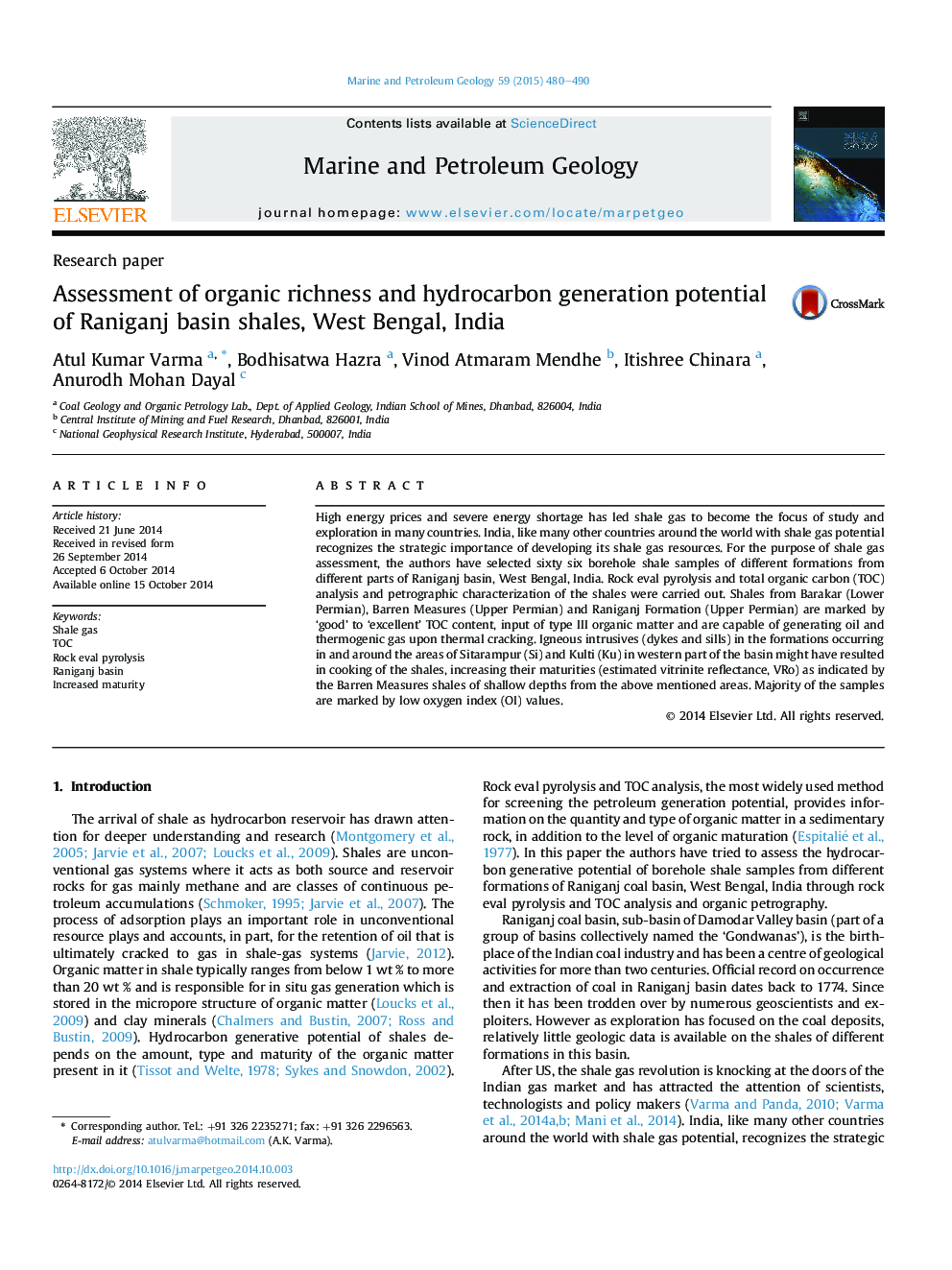| Article ID | Journal | Published Year | Pages | File Type |
|---|---|---|---|---|
| 4695635 | Marine and Petroleum Geology | 2015 | 11 Pages |
•Conceptual hydrogen index (HI) lines from logarithmic plot of S2 (REP) and TOC.•Increased maturity of OM due to igneous intrusives.•Input of dominantly type III organic matter.•Oxides of carbon partially released under S3 curve (REP).•Hydrocarbon generation potential of Raniganj basin shales.
High energy prices and severe energy shortage has led shale gas to become the focus of study and exploration in many countries. India, like many other countries around the world with shale gas potential recognizes the strategic importance of developing its shale gas resources. For the purpose of shale gas assessment, the authors have selected sixty six borehole shale samples of different formations from different parts of Raniganj basin, West Bengal, India. Rock eval pyrolysis and total organic carbon (TOC) analysis and petrographic characterization of the shales were carried out. Shales from Barakar (Lower Permian), Barren Measures (Upper Permian) and Raniganj Formation (Upper Permian) are marked by ‘good’ to ‘excellent’ TOC content, input of type III organic matter and are capable of generating oil and thermogenic gas upon thermal cracking. Igneous intrusives (dykes and sills) in the formations occurring in and around the areas of Sitarampur (Si) and Kulti (Ku) in western part of the basin might have resulted in cooking of the shales, increasing their maturities (estimated vitrinite reflectance, VRo) as indicated by the Barren Measures shales of shallow depths from the above mentioned areas. Majority of the samples are marked by low oxygen index (OI) values.
Graphical abstractFigure optionsDownload full-size imageDownload as PowerPoint slide
